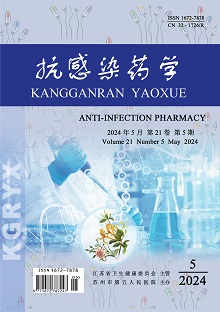XU Lu, ZHOU Xing-bei, WU Jing, WEI Yuan, TAN Hui-ying, HUANG Ju, ZOU Sheng-qiang, SHEN Shuo
Objective: To construct a prediction model for secondary nosocomial infections in patients with COVID-19 based on multi-modal neural network, and provide reference for the prevention and treatment of secondary nosocomial infections of clinical patients. Methods: A total of 2 519 patients with COVID-19 admitted to the Third People's Hospital of Zhenjiang from August 1, 2022 to January 20, 2023 were selected as the research objects, and the information of these patients such as age, past medical history, length of stay (LOS), use of antibacterial drugs, and mechanical ventilation was collected. A multi-modal neural network prediction model was used to analyze the factors influencing the patients' secondary nosocomial infections, and compare it with the conventional multi-factor Logistic regression analysis model. Results: Among the 2 519 patients with COVID-19, 312 had nosocomial infections, with an infection incidence of 12.39%; the Logistic regression analysis results showed that, the secondary nosocomial infections in patients with COVID-19 were related to the age, history of hypertension and history of respiratory diseases, empirical use of antibacterial drugs and immunosuppressants, and mechanical ventilation (P<0.05); among which, the age >65 years, the presence of history of hypertension, the presence of history of respiratory diseases, LOS >7 days, empiric use of antibacterial drugs, and mechanical ventilation were independent risk factors for secondary nosocomial infections in patients (P<0.05); the multi-modal neural network prediction results showed that, the LOS, history of respiratory diseases, age, empirical use of antibacterial drugs, and mechanical ventilation were the five major risk factors of secondary nosocomial infections in patients. The accuracy of the training samples, test samples and persistence samples was 87.49%, 86.31% and 90.28% respectively; the areas under the curve of receiver operating characteristic curves of the multi-modal neural network prediction model and multi-factor Logistic regression analysis model were 0.879 and 0.852 respectively, and the Delong test results showed there was a statistical difference between them (P<0.05). Conclusion: Both the multi-modal neural network prediction model and the multi-factor Logistic regression analysis model can be used to predict the risk of secondary nosocomial infections in patients with COVID-19, but the multi-modal neural network prediction model has better prediction results.
